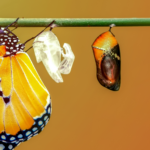1. Run by Grandmothers, This Staten Island Restaurant Highlights Homecooking from Around the World
Most visitors going to Staten Island are doing so to see the Statue of Liberty, but within the kitchen at 27 Hyatt Street can be found one of the most unique restaurants in the whole city.
Enoteca Maria is open Friday, Saturday, and Sunday for visitors to get a glimpse inside another world—many other worlds—as the menu prepared for each weekend is designed and cooked to order by a staff of grandmothers.
From Syria to Peru, Japan to Sicily, the “Nonnas of the World” project showcases traditional home cooking by those in the family who almost always do it best, and whether they’re American citizens, visiting grandmothers, or even refugees, the food and recipes are cooked the way they ought to be, the way they always were.
2. First Known Photos of ‘Lost Bird’ Not Seen in 2 Decades are Captured by University of Texas Scientists
For the first time, scientists have captured photos of a bird in Africa that was unseen for nearly twenty years. Known as the Yellow-crested Helmetshrike, the species had been listed as a ‘lost bird’ by the American Bird Conservancy because it had not been spotted in nearly two decades.
Scientists from the University of Texas at El Paso discovered a small flock of the birds during a six-week expedition to a mountain range in eastern Democratic Republic of the Congo.
“It was a mind-blowing experience to come across these birds. We knew they might be possible here, but I was not prepared for how spectacular and unique they would appear in life,” said UTEP assistant professor Michael Harvey, Ph.D, an ornithologist.
3. Couple Converts 40-Foot School Bus into Gorgeous Home for Working and Travel
Gardeners are playing a critical role in detecting invasive plants before it’s too late, according to a new study. Along with detecting, gardeners are best positioned to act on the information by taking measures to prevent the spread of the plants they detect.
An online survey has revealed that even though gardeners aren’t scientists, they’re effective as a community in identifying ‘future invaders’—or ornamental plants that could become invasive species. Recent research has put together a shortlist of these decorative plants that have the potential to spread out of control and can become harmful to the environment, economy, or human health.
The researchers from the University of Reading and the Royal Horticultural Society (RHS) studied survey answers from 558 gardeners on ornamentals that showed ‘invasive behavior’ in their gardens.






